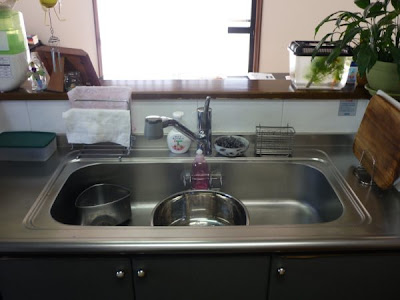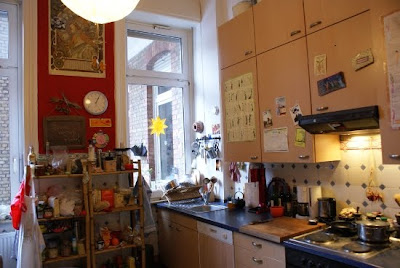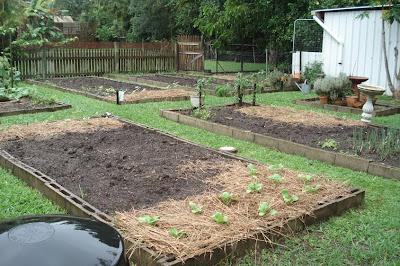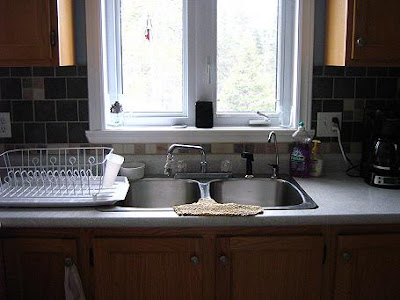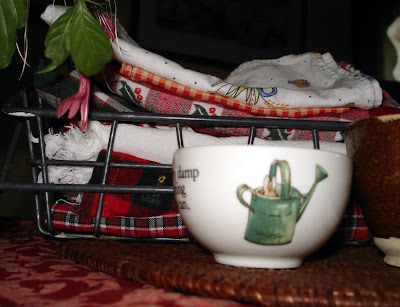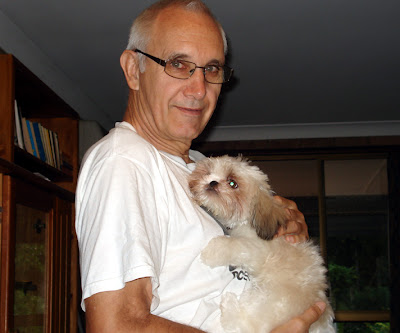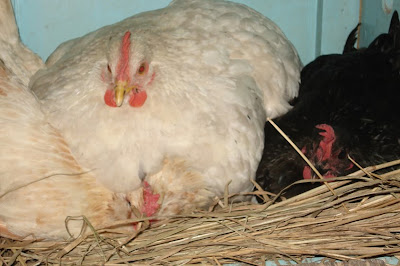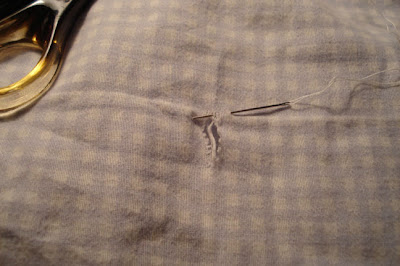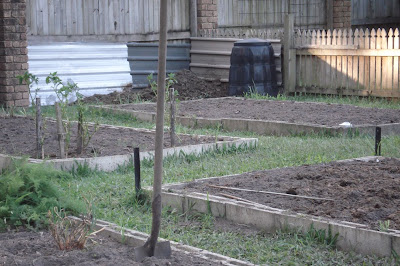Well, some of you realised what I'd done even if I didn't. I'd spent a rather harrowing day with my friend Bernadette in the emergency room of a hospital yesterday, came home at 4pm, checked the comments, made a couple of notes for today's post, pressed "publish" instead of "save" then shut down the computer. Oops.
So let's go through that list. After a very busy week, I took time out on Saturday to reconnect with the chooks. They are always a delight, but occasionally they do something really crazy and I love them even more because of it. On Saturday I went out to feed them and let them out to free range and found the scene below. I had to go back inside to get the camera, because it had to be recorded, not only for me, but for you too. These three girls have been broody for quite some time, although I think Heather is only playing at it because she's often out of the nest too. She's decided she wants to fly and when I open the gate of the chook pen, she flies out over the others. So here in the nest, Germaine and Mary sit, sometimes with Heather. They are all in THE nest. It's everyone's favourite. Usually they each sit in a separate nest, but not on Saturday!
Heather, Germaine (sitting on Heather's head) and Mary.
While I had the camera in my hand I wandered around the backyard to see what Hanno had been doing while I worked last week. He's been concerned that the wires he laid over the roots of the grapefruit and mandarin tree weren't protecting the roots enough, so he made these nifty cages. We still have room to place the mulch around the roots, but the chooks can't scratch the roots. Citrus have their roots close to the surface and if chickens scratch them enough, it can kill the tree. But not now. : - )
We don't have much in the way of vegetables growing now but the fruit still comes. Lemons are growing well, oranges are coming on for winter, red paw paw (papaya) have grown but haven't ripened yet and a few passionfruit are almost ripe. We've had so much rain lately, everything in the yard is green green green! The grass is thick and lush, the crunchy brown grass of early January is a fading memory now.
Lots of lemons for harvesting in Winter.
Yesterday, while I was out with Bernadette, Hanno planted up some seedlings. I'm not sure what he put in, so that will have to wait for another day. I do know the time for a main planting for the year is almost here. We are opposite to most others here in the sub-tropics, here we start our main crops in March (the beginning of Autumn) and plant through until about November (the end of Spring). That last planting generally keeps us in vegetables until March rolls around again. Hanno has developed a great system but we're quite unorthodox and we're not burdened by too many gardening rules. I'll write more about that when I write about the new seedlings.
Juicy passionfruit.
Another thing I'll write about later, because this post is getting quite long now, is the book I'm reading
A Well Kept Home - Household traditions and simple secrets from a French grandmother. I think I became aware of the book on
Ronelle's blog, or maybe it was another, but whereever I found it, it's a real gem of a book.
On Saturday, Hanno and I decided to treat ourselves to a late release movie from the DVD store. The choice - Julie and Julia, of course. I'd been wanting to see it for so long. I like Meryl Streep and Julia Child, but apart from those two people being part of the movie, I knew nothing about it. It turned out to be about a woman, Julie, who writes a blog! She worked for a company designing the 9/11 memorial park, and while she was at work, she received calls from really sad people who lost loved ones in the tragedy, she listened to complains and she generally came home each night worn out and depressed. She decided she had to do something and decided to make every recipe in Julia Child's French cookbook, and then write about it. The movie follows the life of Julie while she starts cooking and writing her blog until she becomes popular, is featured in the New York Times and they start talking about her writing a book. Interwoven in the Julie story is the delightful tale of Julia Child in France in the 1950s with all the superb fashions, hats and gloves. And the butter! Of course it's in most French recipes and at the end of the film, Julie leaves a packet of butter under a photo of Julia at the Julia Child museum. It's really touching and sweet and that one scene would have made me love the film forever.

That is a self seeded passionfruit vine growing along the fence.
It also made me think about my own book - the one I've been writing on and off for ages, and whether it will ever be finished. Julia's book took eigth years! That gives me some hope. I haven't talked about it for a long time but I am still writing, I still have my New York agent, and I still hope to have the book published one day. Watching Julie and Julia made me realise that the self doubt that comes with writing a book seems to be universal. I do wonder if it will ever be finished, I wonder too if anyone will be still here when, and if, it is.
I have work again today and it's my very long day - 8am till 8pm. It's the normal work day with a couple of meetings at the end of it. Tomorrow I'll take Bernadette to have her chemo. Work again on Wednesday and hopefully, after that, I'll write a few lines for the book. I am full of enthusiasm for it, it's just time I lack at the moment. But even though these days are full, the work load is getting lighter and as we settle into our new work building, many new possibilities open up. These are exciting times for me, even though I'm worn out by them. I do know that I'm indeed fortunate to have so many opportunities at this stage of my life, and like most things I hope to make the most of them.
I hope this week is a good one for all of us. ♥

